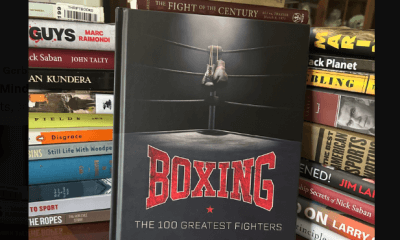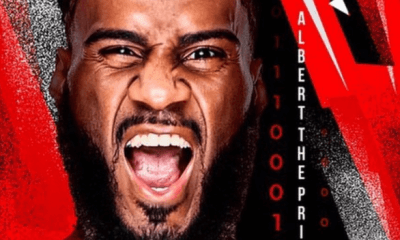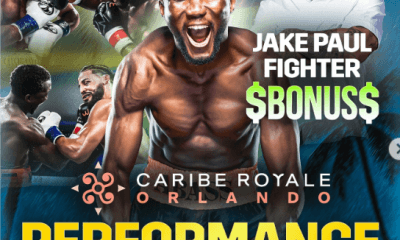Book Review
Close Encounters of the Trump Kind: Reviewing ‘Scoop’ Malinowski’s Latest Book
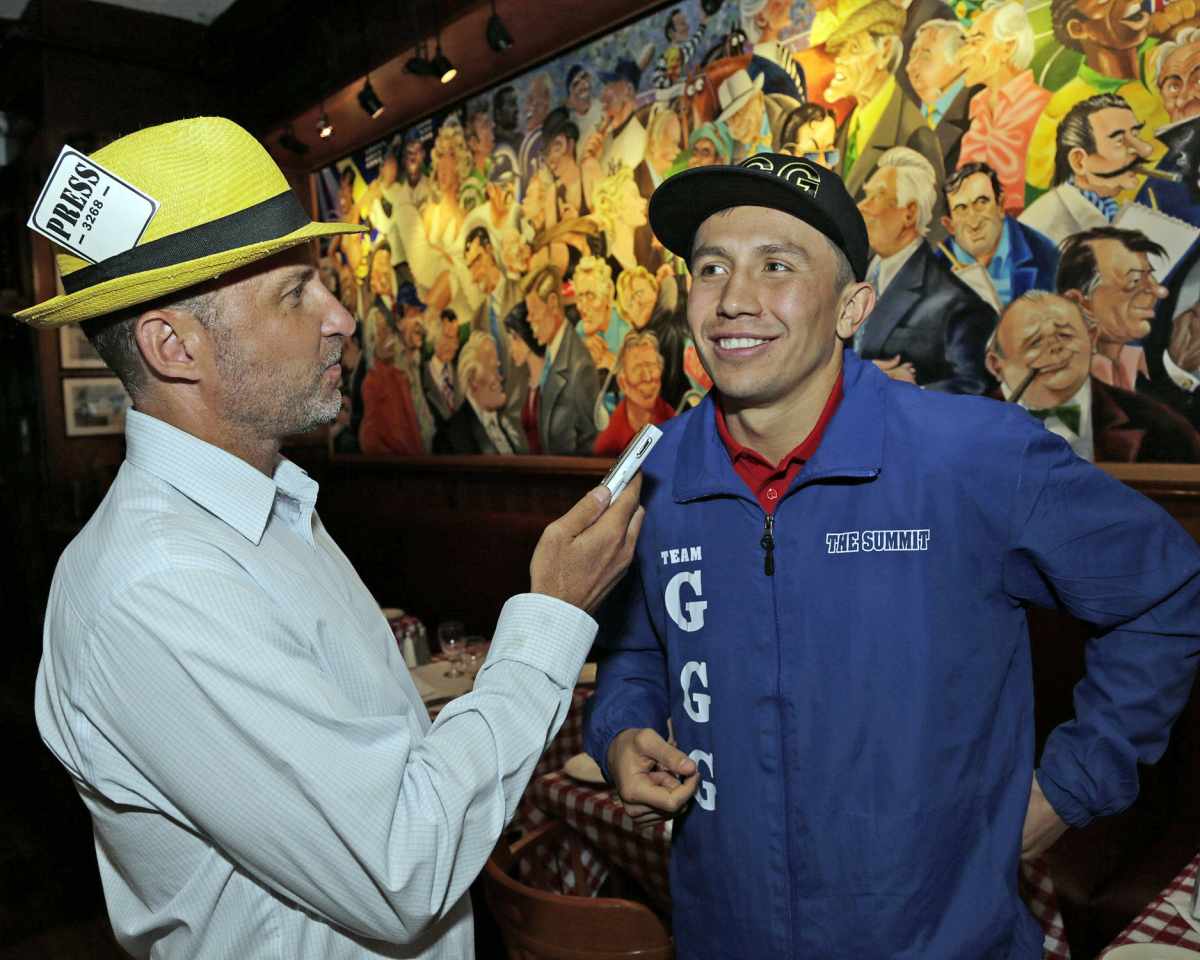
If you happen to follow boxing or tennis closely, you might know who reporter Mark “Scoop” Malinowski is. Author and editor of fourteen books, Malinowski made his name (and earned his media moniker) by writing informative Biofile write-ups about sports and entertainment stars.
Over time, Scoop’s lost track of how many he’s done. Or who his rookie subject was. His first ever published Biofile (in the Morris County Daily Record) was the NJ Nets’ Derrick Coleman.
His Biofile of Boxing Hall of Famer James Toney was published in a 1992 issue of The Ring. Malinowski remembers Toney had an affinity for the stylish suits of sharp-dressed men like Ray Robinson and Thomas Hearns. “He loved their class. How they conducted themselves.”
For most folks familiar with Malinowski, it is these popular Biofiles that readers fondly remember. According to TSS editor-in-chief Arne K. Lang, Scoop’s Biofiles also ran in Boxing Update and Flash, a pair of well circulated pre-internet newsletters he once subscribed to.
Malinowski gained infamy in 2002 when a close encounter with Mike Tyson resulted in a scary press conference brouhaha where the maddest man on the planet threatened bodily harm to Malinowski and his mother. That’s right, it was Scoop who yelled, “Get him a straightjacket!”
Don’t worry, they’re good buds now.
And Scoop’s next book, Facing Guillermo Vilas, will be for sale on Amazon next week. It’s a tennis book but Scoop tells me that Vilas is a “huge boxing fan” and was friends with the late great Carlos Monzon. “Vilas,” says Malinowski, “shares some fascinating Monzon stories.”
But before we get to my review of Malinowski’s new self-published book, “Close Encounters With Donald Trump,” a boxing-centric collection of Trump recollections told by more than 50 contributors (available on Amazon in paperback and kindle editions), I thought I’d have the colorful writer give TSS readers his first ever Biofile—done on himself.
Biofile “Scoop” Malinowski
Born: Philadelphia, PA Status: Reporter, author. Resides: Teaneck, NJ, Bradenton Beach, FL
Childhood Dream: I just wanted to get involved in professional sports somehow, to be a part of the scene. To contribute my own unique original work and make a positive impact. My visions became clearer later. To write books, do Biofile interviews for newspapers and magazines.
First Journalism Memory: Creating homemade boxing programs and a magazine for our neighborhood boxing cards in junior high school.
Why You Love Boxing: It’s man at his best. A great fight is inspiring on many levels.
Favorite Boxing Movies: “Rocky” and “Gentleman Jim.” When Apollo Creed decks Balboa and he somehow gets up and wants to continue. The look Creed gives him, of pity, respect and awe. I get chills and a tear every time. In “Gentleman Jim,” the scene where Sullivan goes to meet Corbett after their fight at the hotel. The class and respect they show each other.
Favorite Artist: Raoul Dufy, LeRoy Neiman.
Childhood Heroes: Roberto Duran, Carl Kolchak.
First Famous Person You Met or Encountered: Alex Ramos drove by us on the Garden State Parkway, me and my friend Mike Pinto were going with his parents to the Jersey Shore for the weekend in junior high in the 80s. Ramos was driving a white Buick with Yankee pinstripes. He waved to us too! He told me two decades later when we met that the Yankees gifted it to him.
First Car: 1979 Toyota Corolla.
Funniest Boxer: Andrew Golota – great sense of humor, but you have to know him. I’ve been to his house, got him tickets for a week at the 2017 US Open. He drove all night from Chicago to watch the US Open the next day. Huge tennis fan. Also, Lennox – subtle. Very smart, sharp. Maybe the greatest of all time. Joel Casamayor told me he eats rocks and nails for breakfast.
Favorite TV Show: Columbo, Honeymooners.
Embarrassing Career Memory: Misspelling Ross Greenburg’s name for his Biofile in the Boxing Update newsletter. I spelled it Greenberg. He was totally cool about it.
Funny Boxing Memory: I had lunch with Jack Dempsey’s wife Deanna and we did a Biofile in NYC. She told me how she first met Jack. She had a little boutique in a hotel in Manhattan and Jack used to visit her there. That was how the courtship started and evolved. She said when he first told her his name, he didn’t say he was Jack Dempsey. He told her he was John L. Sullivan.
Favorite Movies: Citizen Kane, Three Days of the Condor, Dial M For Murder, Camille.
Greatest Career Moments: Doing hundreds of Biofiles with great boxers like Holmes, Lewis, Klitschkos, Pacquiao, Duran, Hearns, Archie Moore, Jake LaMotta, Holyfield, Bowe, Toney. Meeting artist Leroy Neiman at the Toney-Tiberi fight in 1992 at the Trump Taj Mahal in Atlantic City, NJ. We became close friends. The friendship lasted until his death at age 91 in 2012.
Musical Tastes: 70s and 80s. Steely Dan, Wham, Olivia Newton John, Abba, Bee Gees.
Most Painful Moment: My Muhammad Ali Biofile was aborted after one question. It was at an NBA All-Star function in NYC in the mid-90s. I asked him the first question, his childhood hero. He answered Willie Pastrano. But he motioned with his hand to turn off the tape recorder.
Ali didn’t want to be recorded as his speaking was not strong. So, I ran over to my table to get a pen and paper. But the bodyguard blocked me and wouldn’t let me continue the interview. I should have just done it with no pen or paper, I would have remembered everything!
Favorite Sport Outside Boxing: Tennis. Tracy Austin said it’s “a fistfight without the fists.”
Favorite Fights: I like masterpieces. Duran vs Leonard in Montreal. That fight took over my life. Hopkins vs Trinidad. Lennox Lewis vs Tyson, Rahman 2, Ruddock. The revenge of Vitali vs Corrie Sanders. Tarver KO Jones in two. Klitschko vs Joshua was incredible. Duran’s redemption vs Davey Moore. Pacquiao vs Cotto was magic. Toney vs Jirov was incredible. They embraced each other three different times after that fight in the ring! Major respect. Nunn vs Kalambay. Leonard vs Hearns. Dempsey vs Willard. Ali vs Foreman. Holmes vs Norton. Tyson vs Spinks and Berbick. Tyson could have beaten any man in history on those nights.
***
Fortunately for Scoop, Tyson didn’t beat him for his senseless outburst. The pair now share a friendship that could only have been brokered in boxing. Both are also admirers of President Trump and Tyson’s quotes about Trump are prominent in Close Encounters With Donald Trump.
The book also contains contributions from George Foreman, Larry Holmes, Chuck Wepner, Jackie Kallen, Randy Gordon, Andrew Golota, Michael Marley, Iran Barkley, Randy Neumann, Vinny Pazienza, Bobby Czyz, Montell Griffin, Steve Lott, John Scully, and Paul Vaden.
Oh, and yours truly.
Yes, that’s right, I had my own close encounter with Donald Trump to share in Malinowski’s new book. You’ll have to read it for the whole story but what I can tell you is that it’s published with a photo I snapped of then boxing promoter Trump backstage at Holyfield-Stewart II in 1993.
Almost to a man, the many boxing personalities polled had nothing but respectful and insightful things to say about the human lightning rod who today runs America. Malinowski begins by making it clear his 156-page Trump book has nothing whatsoever to do with a political agenda.
Explains Malinowski: “It is simply a collection of memories and anecdotes from a wide range of people who have had close encounters with the current President of the United States of America, Donald Trump. That is all this book is about, nothing more, nothing less.”
The truth is that Malinowski loves Trump and Close Encounters With Donald Trump reflects that. After his obligatory political disclaimer, Malinowski recalls his own close encounters with Trump in 1988 (at an Azumah Nelson fight he was covering live from press row at Trump Plaza) and again at the 1998 US Open being held at the Louis Armstrong Stadium in New York City.
LITERAL REVIEW
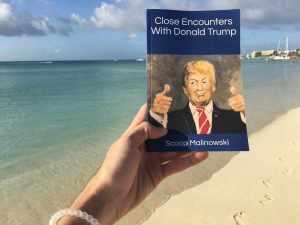
The opening quote presented in the book doesn’t come from one of the fifty-two contributors but from former two-term President Ronald Reagan. “For the life of me, and I’ll never know how to explain it, but when I met that man, I felt like I was the one shaking hands with the President.”
How novel in the age of coronavirus.
California born super-welterweight Paul Vaden recalls that Trump was seated at ringside in 1999 the night he fought Stephan Johnson at the Trump Taj Mahal in Atlantic City. Tragically, Johnson passed away from injuries suffered in the bout. Vaden’s memories are foggy but he states: “In the hallway of my dressing room after the Stephan fight is where we talked. Trump complimented me on my boxing skills and hand speed. That individual was a huge boxing fan.”
Rocky Balboa inspiration and current Trump supporter Chuck Wepner recalls that Trump really enjoyed the company of fighters and that he once invited him to Mar-A-Lago in Florida. “He was interested in promoting a cage fight, me with Tex Cobb. But it never happened.” Known as the “Bayonne Bleeder” in boxing circles, Wepner laments that Bayonne is a “Democrat town.”
New York City boxing icon Randy “The Commish” Gordon tells for the first time how in 1984 he came to be pushed out of his post at The Ring. “As editor-in-chief, I was interviewing Trump for the cover story in the following month’s Ring. I had intended to put Trump on the cover.”
But the publishers were clearing house.
And editorial heads would roll.
“Doing a great job of saving his job,” Gordon matter-of-factly recalls, “Nigel Collins said it should be me who should be fired, as I was going out of town nearly every week for TV assignments. He didn’t tell them I was interviewing Donald Trump for the next month’s cover and they bought his story. My days at The Ring ended that day with Collins going on to run the magazine.”
Gordon’s Trump feature never ran.
BIG George Foreman isn’t shy about his respect and appreciation for Trump. “‘I will always be grateful to entrepreneur Donald Trump. And now President Donald Trump. A lot of people don’t like him but evidently more do, because he was elected President of the United States.”
Because I’m seven feet tall, I enjoyed heavyweight Randy Neumann’s input. “I met Trump in Atlantic City. He’s pretty tall. I remember being in the elevator with him. He’s bigger than me.”
Donald Trump is 6-foot-3.
One-time welterweight title challenger Larry Barnes keeps it simple: “I never had a problem with Mr. Trump. He always gave me what I needed. I met him at a press conference in Atlantic City. He was a very nice gentleman. I wish him the best because I care about Donald Trump.”
A bitter Larry Holmes veered into “Rocky couldn’t carry my jockstrap” territory in his description of trying to meet Trump at one of his hotels. “I walked up to him (and said), ‘Hey Donald. How are you?’ He looked at me like I was a piece of shit. So I don’t care for Donald Trump. That’s Donald Trump. He’s the man. It’s all about him. If it’s not about him, it isn’t about nothing.”
Blaming Trump for Mike Tyson’s breakup with manager Bill Cayton, trainer Steve Lott alleges that Trump basically conspired with Robin Givens to steal Mike’s money before Don King could get to it. “Trump is a great con man,” he says. “He quickly realized Robin was a con artist too.”
Judicious boxing manager Jackie Kallen has many memories of Trump. She first met him in 1988 at the Tyson-Spinks fight. Kallen was impressed by his ability to throw a party. “The room was packed with A-listers including Jesse Jackson, Oprah Winfrey, Jack Nicholson, Warren Beatty, Billy Crystal, Herschel Walker, and so many others that you didn’t know where to look.”
Kallen also remembers the day in 1992 that her fighter, James Toney, received a gift decision at the Trump Taj Mahal against underdog Dave Tiberi. “Trump thought it was an outrage and went straight to Tiberi’s locker room to console him,” says Kallen. “I remember him looking at me in the ring as the referee held Toney’s hand in the air. He shook his head in disgust. Even though I had nothing to do with the decision, I could tell he was upset with me, and I did not know why.”
Manager Mario Costa shared a poignant story about the night Matthew Hilton was upset by Robert Hines in 1988. Hilton was hurtin at the Hilton. But guess who else was there in Vegas?
You guessed it. The future American President. Costa remembers that Hilton was in a dressing room trailer in the back lot of the hotel. Hilton was rightly devastated. Then somebody knocked on the door. “Trump came to the trailer and wanted to talk to Matthew,” explains Costa. “Matthew said, ‘Okay, let him in.’ He came in. Trump kneeled down on one knee to talk with Matthew.”
John Scully still has a memento of Trump he gained in the dressing room with Derrick “Smoke” Gainer in 1995 at Convention Hall in Atlantic City. “Trump came in after the fight to congratulate Smoke. I saw that and I took a picture of it as it was happening. I thought it was pretty cool at that moment that he came back to the dressing room to congratulate an undercard fighter.”
The photo is in the book.
Andrew Golota is sure that Trump came to his dressing room before his brawl with Michael Grant in 1999 at the Trump Taj Mahal. But not surprisingly, Golota can’t recall what was said during the meeting. Golota also couldn’t remember to keep his punches up. He lost two points for low blows against Grant and then told the referee he couldn’t continue after a knockdown.
Sports writer Michael Marley (incorrectly spelled Micheal in the book) recalls meeting ‘The Donald’ several times in the 80s during his years of covering boxing for the New York Post. Marley says that Trump and then wife Ivana always told him the same thing, “Enjoy yourself.”
Bobby Czyz reveals he almost retired in 1989 to work for Donald Trump as a representative in one of his casinos but it never happened because Czyz kept on fighting until 1998. His love for the President is clear. “I didn’t think he had a chance to win the Presidency because of the Clinton conspiracy. Look, I know they’re all crooked. So many people died under the Clinton regime that it doesn’t make sense. But Donald beat her. I love the guy. I think he’s incredible.”
Rhode Island’s “Pazmanian Devil” Vinny Pazienza hilariously insists that Trump loves HIM for the millions of dollars he made for Trump. “I fought a lot of fights with Trump. Hector Camacho, Greg Haugen, Roberto Duran, Roy Jones, so many fights. I fought in Atlantic City a lot.”
***
For readers looking for less than positive recollections of Trump, there are some in the book, they’re just not told, with the exception of Larry Holmes and Steve Lott, by the boxing people.
A lawyer named Pat English contends that Trump gleefully defaulted on his casino contracts and killed every mom and pop shop from there to Washington DC. Attorney Benjamin Clarke prosecutes Trump for his hair, saying he’s only sure of one thing—that it’s not of this Earth.
For nearly everyone else heard from, from tennis players to golf pros to hockey legends, the general themes expressed in Close Encounters With Donald Trump are those of special memories with a special person. I enjoyed my copy last month on the beach in Aruba.
I’ll never forget my close encounter with Trump.
Boxing Writer Jeffrey Freeman grew up in the City of Champions, Brockton, Massachusetts from 1973 to 1987, during the Marvelous career of Marvin Hagler. JFree then lived in Lowell, Mass during the best years of Irish Micky Ward’s illustrious career. A new member of the Boxing Writers Association of America and a Bernie Award Winner in the Category of Feature Under 1500 Words, Freeman covers boxing for The Sweet Science in New England.
Check out more boxing news on video at The Boxing Channel
To comment on this story in The Fight Forum CLICK HERE
-

 Featured Articles3 weeks ago
Featured Articles3 weeks agoThe Hauser Report: Cinematic and Literary Notes
-

 Featured Articles4 weeks ago
Featured Articles4 weeks agoOscar Duarte and Regis Prograis Prevail on an Action-Packed Fight Card in Chicago
-

 Book Review3 weeks ago
Book Review3 weeks agoMark Kriegel’s New Book About Mike Tyson is a Must-Read
-
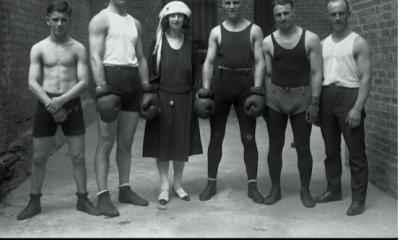
 Featured Articles1 week ago
Featured Articles1 week agoThe Hauser Report: Debunking Two Myths and Other Notes
-
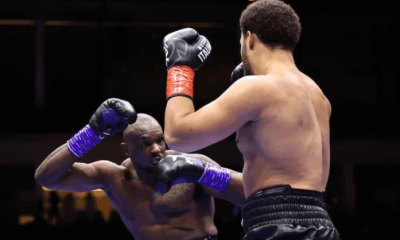
 Featured Articles2 weeks ago
Featured Articles2 weeks agoMoses Itauma Continues his Rapid Rise; Steamrolls Dillian Whyte in Riyadh
-
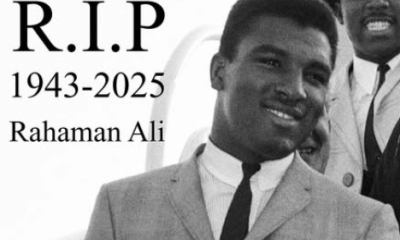
 Featured Articles4 weeks ago
Featured Articles4 weeks agoRahaman Ali (1943-2025)
-

 Featured Articles4 weeks ago
Featured Articles4 weeks agoTop Rank Boxing is in Limbo, but that Hasn’t Benched Robert Garcia’s Up-and-Comers
-
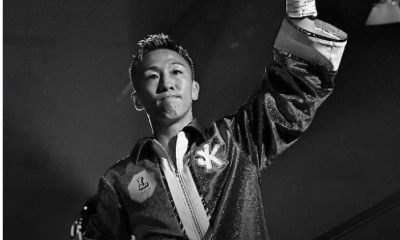
 Featured Articles3 weeks ago
Featured Articles3 weeks agoKotari and Urakawa – Two Fatalities on the Same Card in Japan: Boxing’s Darkest Day


